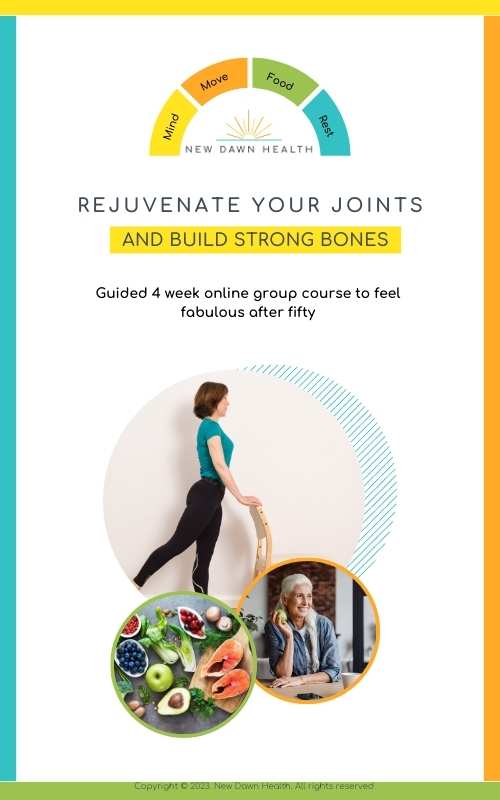Osteopath Corsham
Registered Osteopath & Nutritional Therapist
Start living your healthy and pain-free life.
“Welcome! I’m Dawn, your trusted osteopath in Corsham. My mission is to provide relief from aches and pains stemming from muscles, bones, ligaments, tendons, and joints. Through hands-on treatment and exercise prescriptions, alongside optional nutritional therapy, I tailor my approach to your specific needs. My goal? To alleviate your discomfort and stimulate your body’s natural healing process, so you can move freely again.”
My services
Osteopathy
Joint Programme
A foundational 4 week programme specifically designed for women over 50. A journey towards greater strength and flexibility in your bones and joints, respectively.
“You have a wonderful approach of listening, supporting and empowering, careful, thoughtful and has helped me to live a pain-free life, despite some physical problems.”
54 yr old lady with a prolapsed disc
Understanding and managing joint pain through menopause
The transition through menopause isn’t always smooth. Women’s declining female hormones, particularly oestrogen and progesterone, can commonly cause joint aches and muscle pains. To address this, a whole-person approach is needed, combining the structural osteopathic approach with the systems approach of functional medicine.
Aches and pains as we age
Why do people complain of aches and pains as they get older? This blog explores how and why the spine and other joints age due to habitual movement patterns, overuse or misuse. Sedentary behaviour, a poor diet and smoking contribute to faster ageing. We need to eat an anti-inflammatory diet; develop an exercise strategy that maintains bone density and muscle mass, improves joint flexibility, and jeeps our heart and lungs fit.
What are the differences between an osteopath and a chiropractor?
In the United Kingdom, osteopaths are regulated by the General Osteopathic Council and chiropractors by the General Chiropractic Council. You can search for registered practitioners on these respective websites. Practitioners follow 4-5 year degree courses. Generally speaking, chiropractic focuses on the spinal joints and their connection to the nervous system while osteopathy is concerned with the overall body and how it functions and acts as a whole. This is why a typical chiropractic treatment focuses on the spine, while an osteopathic treatment may treat many areas of the body as well as the spine. Therefore treatment techniques often differ. Chiropractors typically use spinal manipulation to adjust a joint and improve its position or function. People commonly refer to these movements as “cracking”. Osteopaths also use spinal manipulation and also articulation techniques that gently ease a joint into better movement. Osteopaths also use soft-tissue massage techniques, and other muscle techniques to ease pain and restore function. Both practitioners may recommend specific rehabilitation exercises, like physiotherapists, but this is personalised to individual practitioners. To help you choose the practitioner that is right for you, it’s a good idea to check if they specialise in any particular condition or body region. Match what you need with a practitioner who specialises in your condition, by checking their website. Seeking a personal recommendation and/or ringing up first and asking about how long each session is, (this varies between osteopaths and chiropractors) what techniques they may use and how many treatments your condition may typically require will help you choose too.Is Osteopathy for lower back pain effective?
Yes, it is. In the paper, “Effectiveness of osteopathic interventions in chronic non-specific low back pain: A systematic review and meta-analysis” 2020 published in Complementary Therapies In Medicine, the findings stated that, “Osteopathy revealed to be more effective than control interventions in pain reduction and improving functional status in non-specific chronic low back pain”.
How much does an osteopath cost?
Fees vary across the UK depending on a number of factors including the osteopath’s location, but the majority of osteopaths tend to charge an initial consultation fee of £55 to £65 and between £48 and £56 for subsequent sessions (according to the Institute of Osteopathy Membership Census 2021). Find out my competitive fees.



